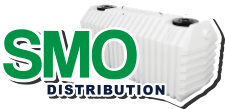Tips and Tricks
What are the regulations related to wastewater treatment?
The Regulation respecting the evacuation and treatment of wastewater from isolated dwellings covers the evacuation and treatment of wastewater from residences with 6 bedrooms or less ã and from buildings that produce a total daily flow of wastewater of domestic origin of no more than 3,240 liters. These residences and other buildings must not be connected to municipal sewer systems or collective sanitation works.
The purpose of the Regulation is to prohibit the discharge into the environment of water from lavatories, wastewater or gray water unless this water has received appropriate treatment. This untreated water constitutes a contaminant within the meaning of the Environment Quality Act.
How can I make emptying my tank easier?
In general, it is the owner's responsibility to make the lid of the septic tank accessible to allow the tank to be emptied. To facilitate this task, you can raise the cover of your tank using riser and/or replace your concrete cover with a plastic cover. You must also plan the landscaping of your land accordingly.
How do I make sure my system stays in good shape?
- Do not backfill more than 36 in. (90 cm) above a septic tank.
- Clean the prefilter once or twice a year.
- Installing a carbon filter on the house vent can eliminate odors around the house.
- Avoid building parking areas, terraces, or a skating rink on the surface of the disposal bed and on the tank.
- Reduce water consumption, and therefore the volume of waste water, by installing water-saving devices in sanitary appliances.
- Spread the use of automatic washing machines and dishwashers over a period of several days.
Signs of a faulty septic system
- Backflow into the toilet or other sanitary fixtures, or slower than normal emptying.
- Bad odors in the house or in drinking water.
- Soggy ground around the septic tank or leaching bed.
- Puddles of sewage or effluent around the septic tank.
- Particularly green or thick grass on the surface of the disposal bed.
- Significant growth of algae in nearby lakes or watercourses.
- High levels of nitrates, bacteria or other contaminants in the well water.
I need to replace my existing septic field or build one for a new build, where do I start?
The first thing to do is contact a technologist or engineer who can do a soil and site survey and can provide you with a plan. They alone are empowered to decide which type of treatment system is suitable for your specific needs.
What not to throw down the drain?
Because septic systems rely on bacteria to break down the waste material, it is important that you donãt poison these micro-organisms. Even small amounts of paints, solvents, thinners, nail polish remover and other common household compounds flushed or poured down the drain can kill the bacteria that break down the organic matter in the wastewater. Household disinfectants such as laundry bleach or toilet bowl cleaner can be used in moderation without affecting the operation of the septic system; however, overuse of disinfectants can kill the bacteria in a septic tank. Some manufacturers promote the use of septic tank ãcleanersã, ãstartersã or ãenhancersã to aid in the digestion of the waste. These products are typically of little value and are not recommended.
You should avoid putting anything into the septic system that doesnãt break down naturally or anything that takes a long time to break down. Materials such as oils, grease, and fat, disposable diapers, tampons and their holders, condoms, paper towels, facial tissues, cat box litter, plastics, cigarette filters, coffee grounds, egg shells, and other kitchen wastes, should never be put into the septic system. You should also avoid the use of in-sink garbage disposal units (ãgarburatorsã) unless the septic tank and leaching bed are designed to accommodate the increase water and organic load created from these devices.


